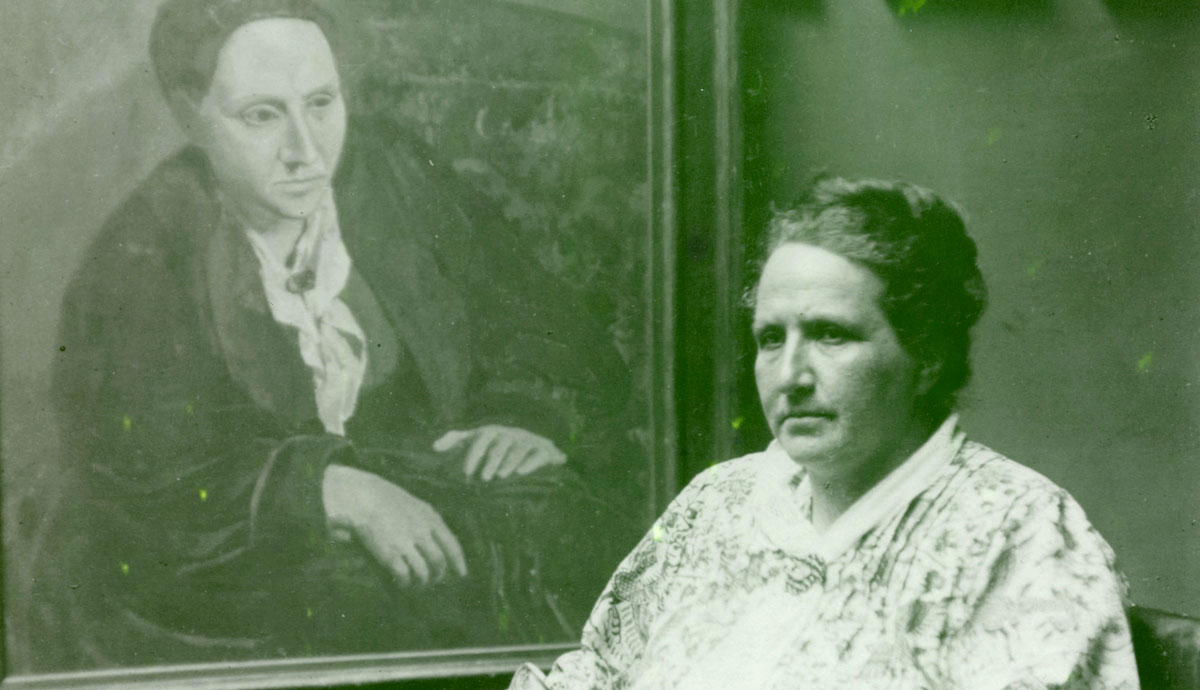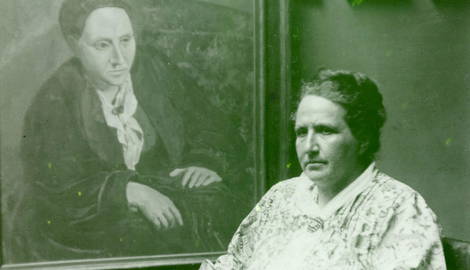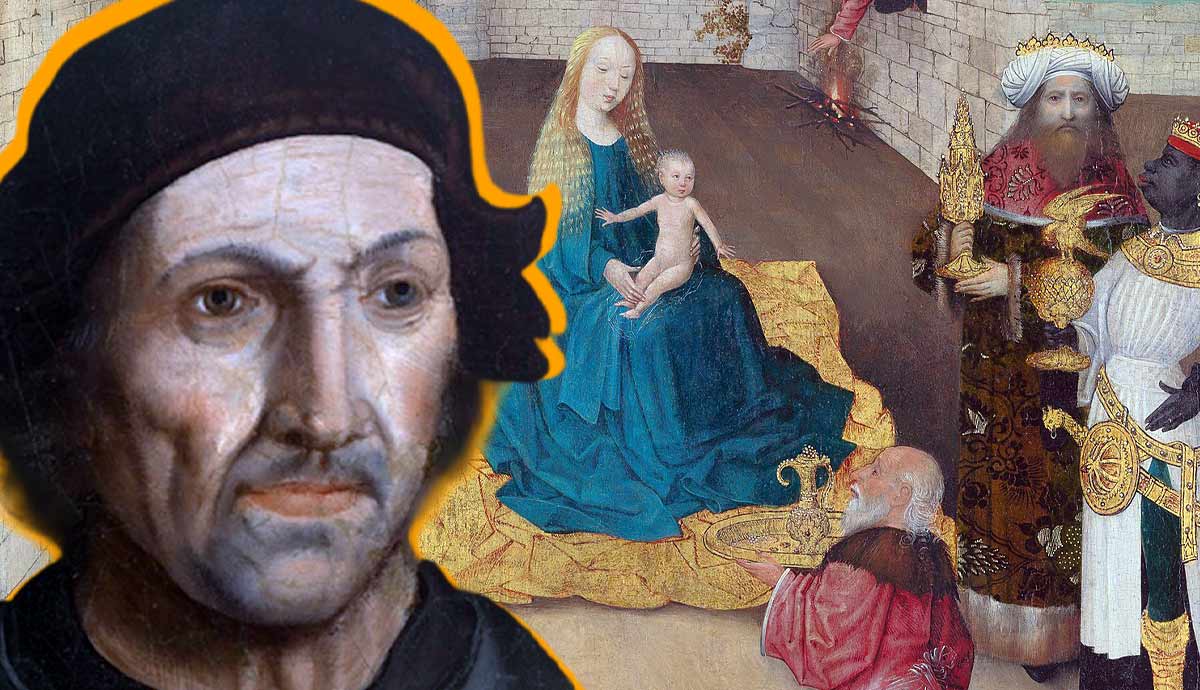
Gertrude Stein is at least vaguely familiar to every art lover, although she was never an artist. Stein’s personality was larger than life and greatly impacted the art world as we know it. But what exactly made an American expatriate in France so remarkable?
What Is Gertrude Stein Famous For?

Gertrude Stein, a prominent art collector and avant-garde poet, was the youngest child of an upper-middle-class Jewish-German family. Most of her childhood years passed in California, where Stein spent her time reading books. A curious and well-read child, she found school programs boring and insufficiently challenging. After an unsuccessful attempt to graduate from medical school, she decided to start a new life in Paris. Her older brother Leo followed her, hoping to become an artist in the place most suitable for it.
At the time, Paris was an expat-friendly place, with its foreigners leaving peacefully on their own terms, especially if they, like Gertrude Stein, had no financial limitations. Soon after establishing their household, the Steins demonstrated a remarkable ability to gather the most outstanding and remarkable people around them.
Stein was the one who coined the term lost generation, which applied to the generation of writers who lived through World War I. Dubbed The Great War, or The War to End All Wars, it was a tragedy unseen before, which left a tremendously destructive impact not only on soldiers but on intellectuals who had never seen rifles and trenches in their lives. The topics of despair and disillusionment, loss of hope and identity were shared by a vast group of writers, many of whom were Stein’s friends.
Stein Is Responsible For Modern Art As We Know It

The first thing one usually thinks of upon hearing Gertrude Stein’s name is her art collection. The Stein siblings in many ways helped the Parisian avant-garde scene happen. Soon after their arrival, Gertrude and Leo befriended the most important art historians and dealers in the city. Their art collection grew quickly, so soon they no longer needed the help of art dealers. They personally knew the artists and commissioned works directly.
Gertrude Stein’s vast collection included the biggest names of all time including Paul Cezanne, Henri Matisse, Pablo Picasso, Pierro-Auguste Renoir, Honore Daumier, and many others. However, she was not only a regular client of these artists, but their patron as well. She hosted weekly salons that brought together both young and promising artists and their experienced colleagues. She frequently attended the Bateau Lavoir, an artists’ commune and a shared studio space occupied by Amedeo Modigliani, Picasso, Kees van Dongen, and Juan Gris.
The trust in Gertrude Stein’s impeccable taste was so high that back in the USA art critics wrote news reports on her latest acquisitions. Still, the Steins’ unique eye for remarkable and groundbreaking art did not always coincide with their feelings. Upon seeing Matisse’s Woman with a Hat, Leo and Gertrude were appalled by it and yet, they kept returning to see it for five consecutive weeks. They eventually gave up and purchased the piece, becoming one of the first patrons of Matisse.
Stein Posed for Picasso

Apart from keeping and expanding her own collection, she encouraged her other wealthy friends to buy works from young avant-garde artists. For the young Parisian radicals, meeting Stein was a blessing that potentially provided them with a comfortable lifestyle for months, allowing them to experiment more. Stein’s proteges sometimes painted her, too. She was not a typical artist’s model—she was not a young, conventionally attractive lady with a fleur of femme fatale—but her personality was striking and mesmerizing.
The famous portrait of Gertrude Stein by Pablo Picasso was not an easy one to make. After more than ninety sittings, Picasso could no longer see his model, since he got used to her face so much that he was unable to paint it properly. Tired and irritated, he completely wiped Stein’s face from the canvas and left Paris for several weeks. After his return, he finished the portrait without Stein posing, this time focusing not on photographic likeness but on the impression of the collector’s personality. Some art historians insist that for Picasso, this portrait became a turning point toward a new style.
Stein Experimented With Automatic Writing

Before the Surrealist artists and writers addressed the hidden subconscious ideas in their works, Gertrude Stein had already tried their methods. Automatic writing was a process of writing down seemingly random word combinations without the writer’s conscious control. A similar approach was used for drawing, and while skeptics explained it with brain activity, spiritualists like Hilma af Klint interpreted it as the presence of higher beings.
Stein was a rational person. Her experiments with automatic writing resulted in a research paper published in the Harvard Psychological Review. Stein and her friend attempted to find a second personality by performing automatic writing while reading, speaking, or moving. After the paper’s publication, Stein moved forward to a more controlled and structured language, with all elements evaluated and thought through. Still, the evidence of her early experience could be found in her book of experimental poetry Tender Buttons, which focused on household items and mundane objects.
She Was an Icon of Sapphic Modernity

With rapid economic and urban development, the gradual emancipation of women followed. In its heart, it was hardly a product of a reevaluation of morals but rather a decision based on economic necessity. The growing market required more workforce and more independent actors, and many women were ready to play their part. As the positions for women improved, lesbian and bisexual women became more visible, enjoying their newfound freedoms and building their own communities. Charles Baudelaire claimed that a sapphic woman was an emblem of the modern era, its creation, and a dark omen of the world in a moral decline.
Gertrude Stein kept her sexuality a secret. She represented a particularly remarkable part of Parisian sapphics—wealthy, independent, and progressive immigrants who were able to afford lavish lifestyles and ignore the gossip around them. Stein’s circle of friends included artist Romaine Brooks, dancer Ida Rubinstein, and scandalous writers Natalie Barney and Radclyffe Hall. A segment of sapphic literature started to emerge, to the great disdain of the conservative public. One of the first openly and unapologetically sapphic pieces, a short story titled Q.E.D. was based on Stein’s sad love affair during her student years.
She Wrote An Biography For Her Partner

Unlike many other women from Stein’s circle who enjoyed their freedom and were not in committed relationships, Gertrude Stein and her partner Alice B. Toklas spent almost four decades together. Toklas was another American who came to France after surviving the devastating 1906 earthquake in San Francisco. On her second day in Paris, she met Gertrude Stein, and the couple moved in together almost immediately. Toklas acted as both Stein’s manager and a housewife. Their contemporaries noted that the couple had very traditional gendered roles within the family, with Stein occupying the masculine position and Toklas taking care of domestic chores.
In 1933, Stein published a novel titled The Autobiography of Alice B. Toklas, recorded by her partner. This memoir remains an important document with Toklas recalling meetings with artists, writers, and the most remarkable personalities of the era. Still, despite its commercial success, the book caused a stir among those who appeared on Stein’s pages. Henri Matisse, Georges Braque, and Ernest Hemingway detested it, and Stein’s brother Leo dismissed the book as nothing but lies.
After Gertrude Stein died in 1946, Alice B. Toklas uncovered her own passion for writing. Yet her publications were not provocative novels or puzzling poetry collections but cookbooks, still, with the right amount of scandal. Toklas’ most famous recipe was for a fruit and cannabis cookie, which she guaranteed would enliven the atmosphere of every dull party. Published in 1954, it became legendary a decade later, as recreational drug use became more popular.
Gertrude Stein’s Behavior During World War II Raised Suspicion

During the Nazi occupation of France, Gertrude Stein and Alice B. Toklas remained in the country and developed a questionable friendship with Bernard Fay, a Vichy official and an avid believer in conspiracy theories. Moreover, Stein also translated a series of antisemitic speeches by Philippe Petain, the leader of the Vichy regime. Stein and Toklas, who were both Jewish-American lesbians, were not exactly the most respectable category of people for the Nazis, yet, during the occupation, they enjoyed a comfortable lifestyle close to the collaborationist regime’s top officials. One of the main arguments in favor of Stein’s affiliation with the Nazis was the fact that her vast art collection remained intact. While many other collections of avant-garde art, especially those owned by Jewish collectors, were seized and destroyed for being degenerate. Stein’s possessions attracted suspiciously little attention and are now on display in major museums worldwide.










